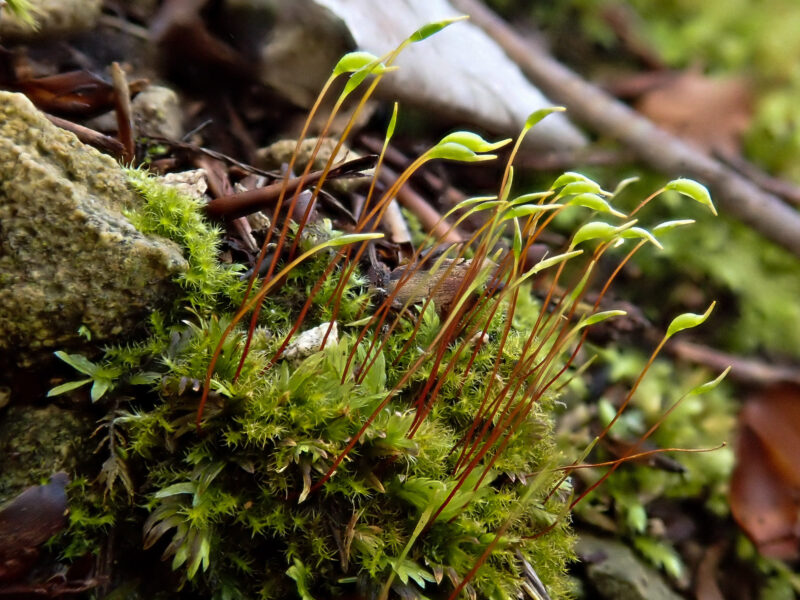Identification notes
This is a scarce plant and one that is rather easy to overlook, except when it has capsules (in the spring). These are large and usually abundant and catch the eye.
C. calcarea often grows on shaded rock or masonry – typically soft limestone or hard chalk – but it can sometimes also be found on thin lime-rich soil in woodland. The plants are often very slender and can easily be mistaken for Amblystegium serpens. However, take a close look at a plant with your hand-lens and you’ll notice that the leaves look more wispy than that species and are often curved away from the stem, making the plants look somewhat prickly. The leaf base is always obviously expanded – a character not shared by any Amblystegium.
In fact the leaf shape will make you think more of Campylium chrysophyllum and C. protensum, closely related species which are not normally found in the shaded woodland habitat of C. calcarea. If there is any doubt which species you have found, examine the underside (abaxial surface) of some leaves under a high power microscope. If you have C. calcarea the leaf cells (not alar cells) will be prorate, an unusual character in mosses. Put simply, prorate means that cells have papillae formed by projecting cell ends – you may have to rack your fine focus up and down to see these. Campylium species do not have such cells.
Read the Field Guide account

















